コラム
落合憲弘
John Sypal
タカザワケンジ
なぎら健壱

This week’s entry in this series is a book you’ve never heard of. Probably.
In fact, the only things I could find about it online were a section on the photographer’s own website and two posts on her Instagram account from 2017. Temptingly, Google presented me with what looked like a link to a Japanese review of the book, but alas, the link was a dead. So it goes.
Tokyo Saishu (The Scent of Festivals) is a book of photographs of festivals, shot and self-published by Eri Kuwata, a young photographer in Tokyo. I remember that we met at Sokyusha, and Totem Pole Photo Gallery in Tokyo. She gave me a copy of her book then- it must have been late 2017. What I remember most from our encounters was her energy and enthusiasm for street photography. This comes through several ways in her (nearly pocketable) black and white book full of photos that, from what I understand, were all snapped in arguably Tokyo’s most interesting place to take a camera: Asakusa.
Asakusa sits along the western edge of the Sumida river in East Tokyo. In the center of this district lies Senso-ji Temple- a bright red, titanium-roofed Buddhist temple that receives some 30 million visitors annually. This makes it, according to Wikipedia at least, “the most visited spiritual site in the world”. With 30 million visitors, most with cameras, I can’t begin to estimate how many photographs have been taken here over the years. Approaching Asakusa with a camera one ought not aim for originality but rather personal curiosity towards its atmosphere and people.
The best photographic work of the area has been done this way- from Hiroh Kikai’s Asakusa portraits, the street work of Ihee Kimura, Kineo Kuwabara, Nobuyoshi Araki, Issei Suda, Mitsugu Ohnishi. . . (I’ll end there because if I start listing the names of photographers who’ve worked in this part of town, you’ll be scrolling for a while. )
What I can say is that, while not breaking ground in technique or location, Kuwata’s collection absolutely adds to the ongoing conversation about Asakusa- countless pictorial testaments which flow together and stretch across time regarding the ways people gather here, and why.
Ms. Kuwata seems most curious- and most celebratory- about action. Both action as it appears in the two-dimensional realm of the photograph and the kind of natural action (interaction) that occurs in the flow of life when people gather to experience an idea or ritual or place- or merely snack and drink together. The visual excitement of the former is entirely dependent on the latter- after all, if there were no people there’d be no pictures.
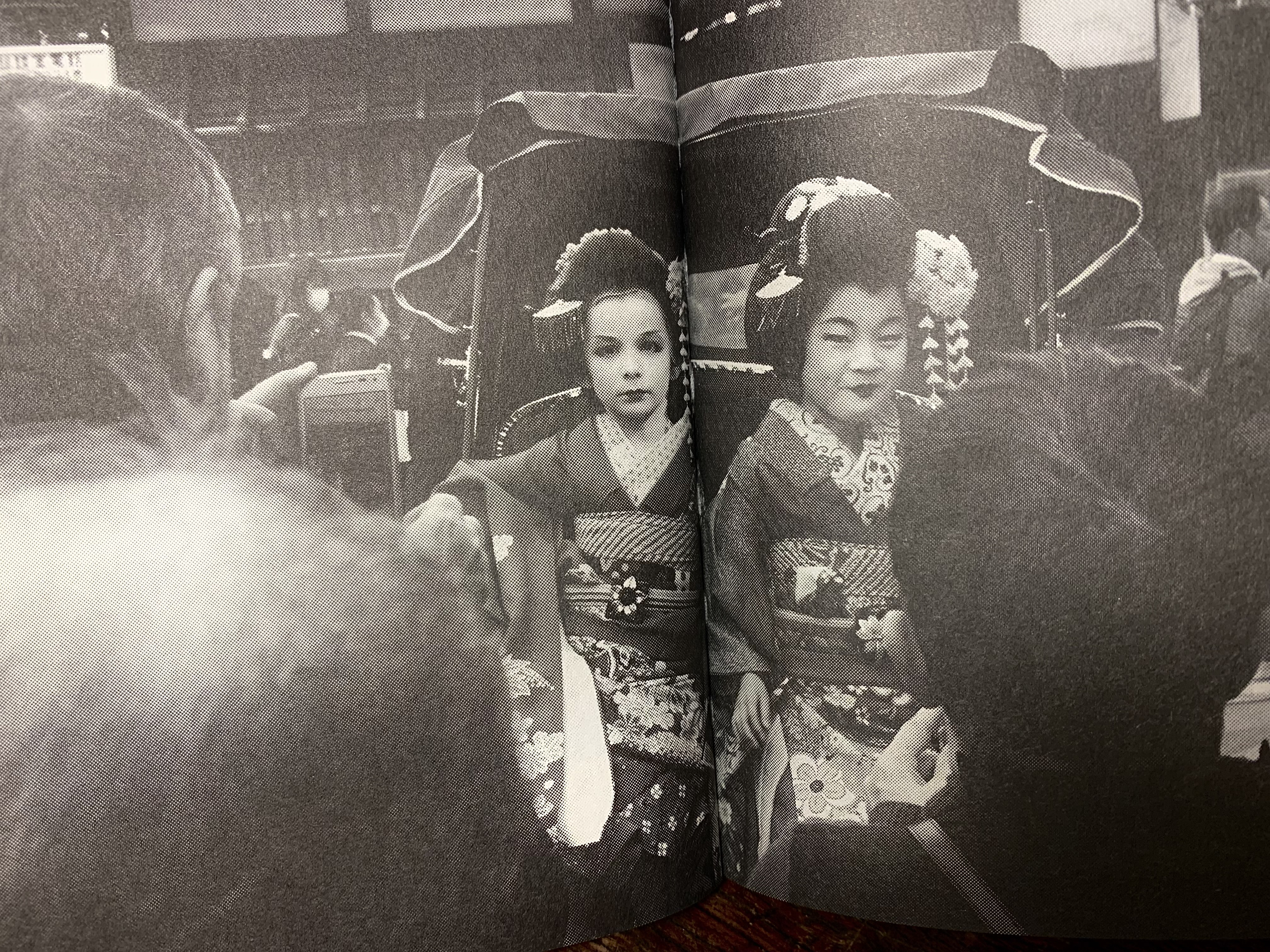
Her pictures have a restless energy to them- she gets close, photographing straight at and through and around people- she’s interested in EVERYTHING- giving special attention to things that move. Gesture- glances- bare bulbs that illuminate food stalls and glint cans of beer floating in coolers- the disjointed posture of young boys and stooped shoulders of the elderly looking across the Sumida, or slowly coasting past on an old bicycle- If the main message of a street photographer is to shout “look at THIS”, then her pictures suggest she’d do so with a smile.
As I said, her enthusiasm is palpable on the page- yet these same pages transmit her energy in a different way. From the moment I first held the book in my hands, I was struck by the economy of it- this is not an insult or even criticism. I immediately felt that this is a labor of love- the manifestation of desire to show what she’s seen.
This she’s done with a budget technique on newsprint-like stock bound between a paperback cover. The images are not finely crafted duotones- there are no subtle gradations accomplished with multiple shades of black ink on archival-quality paper. They’re halftones- a print quality which calls to mind the black and white pages from early issues of Shashin Jidai - or any other of the trillions of monochrome newsprint that made up so much of 20th century Japanese magazine culture. The halftone look is also appropriate for the mood of her subject- it echoes Asakusa’s rougher edges- it’s worn corners and sagging houses a few streets back from the kimono rental shops and giggling college girls in rented kimonos taking selfies.
I don’t know the backstory to this particular book’s production or funding- but do I know that photobooks are the end sum of a game played by balancing numbers against dreams. The final incarnation of Tokyo Saishu suggests the budget of a young photographer self-publishing her first book- but this is precisely what I find charming about it as an object.
I’ve seen copies of Tokyo Saishu, with its price of a mere 1000 yen, at Sokyusha in Shinjuku. Ms. Kuwata’s website lists other shops where it can be purchased.
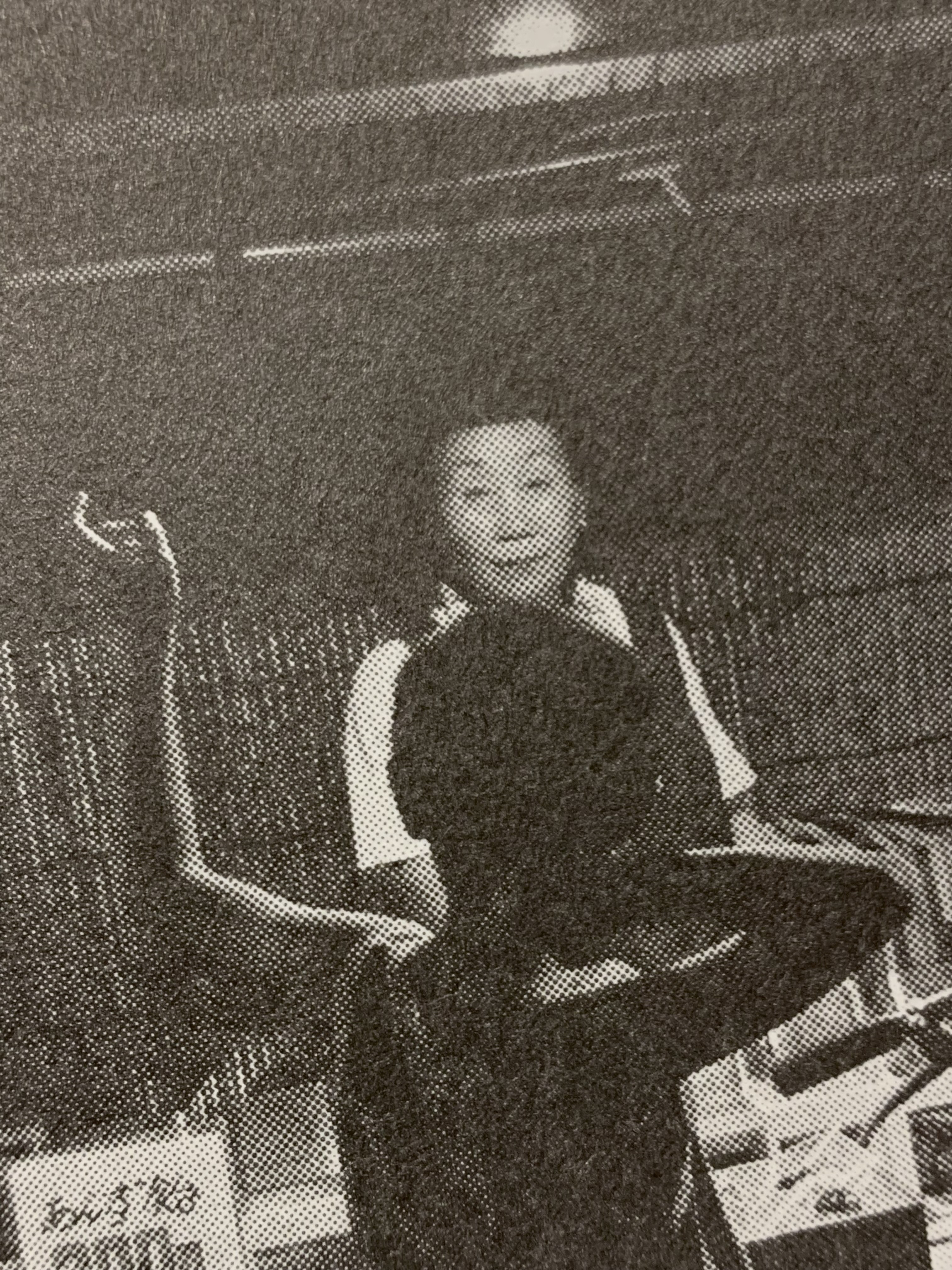
今週のTokyo Photobook Tourは、きっとみなさんが聞いたことのない本です。
実際、私がネット上でこの写真集を見つけることができたのは、写真家自身のサイトと、Instagramアカウント(@erifooum)での2つの投稿だけでした。面白い本なので、このコラムでたくさん人々に意識していただけると嬉しいです。
新宿にある蒼穹舎やトーテムポールフォトギャラリーで桑田さんにお会いしたことを覚えています。最も記憶に残っているのは、彼女のエネルギーとストリートスナップに対する熱意です。2017年の終わり頃だったでしょうか、彼女から写真集をいただきました。
『東京祭臭』は、東京の若手写真家・桑田絵梨さんが撮影し、自費出版したお祭りの写真集です。間違いなく最も東京で興味深く、カメラを持って行くべき場所である”浅草”で撮影された写真が満載です。ほぼポケットに入るサイズのモノクロの写真集の中で、いくつかの方法で現れています。
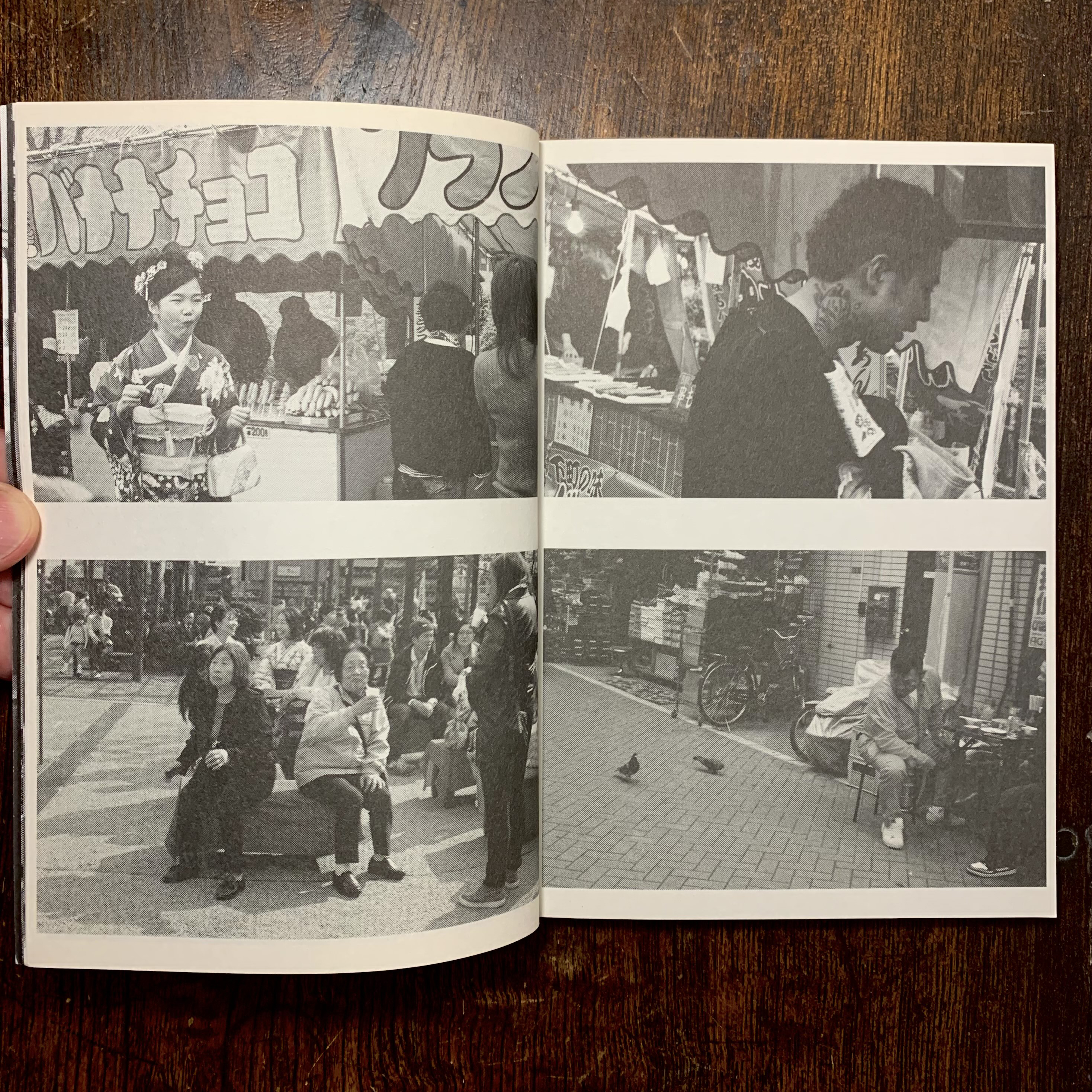
トタン屋根の赤い浅草寺には年間約3000万人の参拝客が訪れ、 ウィキペディアによれば「世界で最も多くの人が訪れる霊場」だそうです。 3000万人もの参拝者のほとんどがカメラを持っているのだから、これまでどれだけの写真が撮られてきたかは計り知れません。
浅草にカメラでアプローチする場合、オリジナリティを求めるのではなく、浅草の雰囲気や人々に対する個人的な好奇心が必要になるのだと思います。鬼海弘雄の浅草ポートレート、木村伊兵衛、桑原甲子雄、荒木経惟、須田一政、大西みつぐなど、この地域の最高の写真作品はこうして撮られてきました…(浅草で活躍した写真家の名前を挙げ始めると、しばらくスクロールすることになるのでこの辺で終わります)。
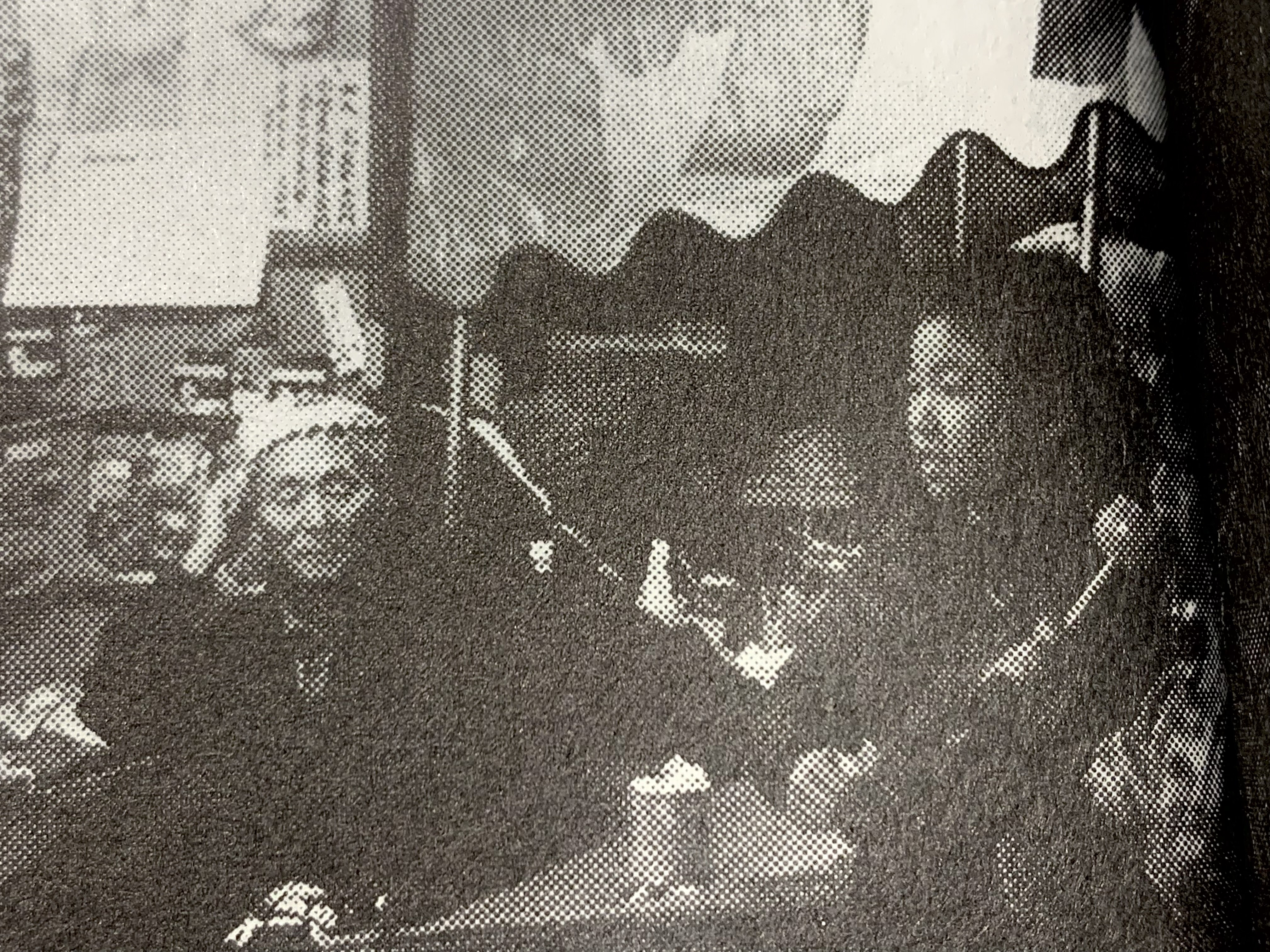
桑田さんのコレクションは、技法や撮影地が画期的なわけではなく、浅草をめぐる現在進行形の会話に確実に貢献するものなのです。
桑田さんは「Action」(動き)というものに最も興味をもち、また最も賞賛しているようです。写真という二次元の領域に現れる行為と、思想や儀式、場所を体験するために人々が集まり、あるいはただ一緒に食事をしたり飲んだりする、生活の流れの中で起こる自然な行為(相互作用)の両方です。 人間がいるからこそ写真があるのです。
彼女の写真には行き場のないエネルギーがあります。彼女はカメラを人々に向けながら近づき、まっすぐにスナップしたり、人混みを通り抜けて、周辺のあちらこちらを撮影します。

ジェスチャー、視線、屋台を照らす裸電球、クーラーに浮かぶ缶ビール、屋台前の少年のバラバラな姿勢、隅田川を見わたす高齢者の猫背、古い自転車でゆっくりと通り過ぎる浅草人など、ストリートを撮る写真家の主なメッセージが「これを見て!」と叫ぶことだとすれば、彼女は笑顔で写真を撮りながらそれを示しているように思えるのです。
彼女の熱意はページからも伝わってきますが、そのページからはまた別の意味で彼女のエネルギーが伝わってきます。 この写真集を初めて手にしたとき、私はその経済性に衝撃を受けました。これは侮辱でも批判でもありません。この写真集は、彼女が見てきたものを見せたいという願望の表れであり、愛の結晶であるとすぐに感じました。
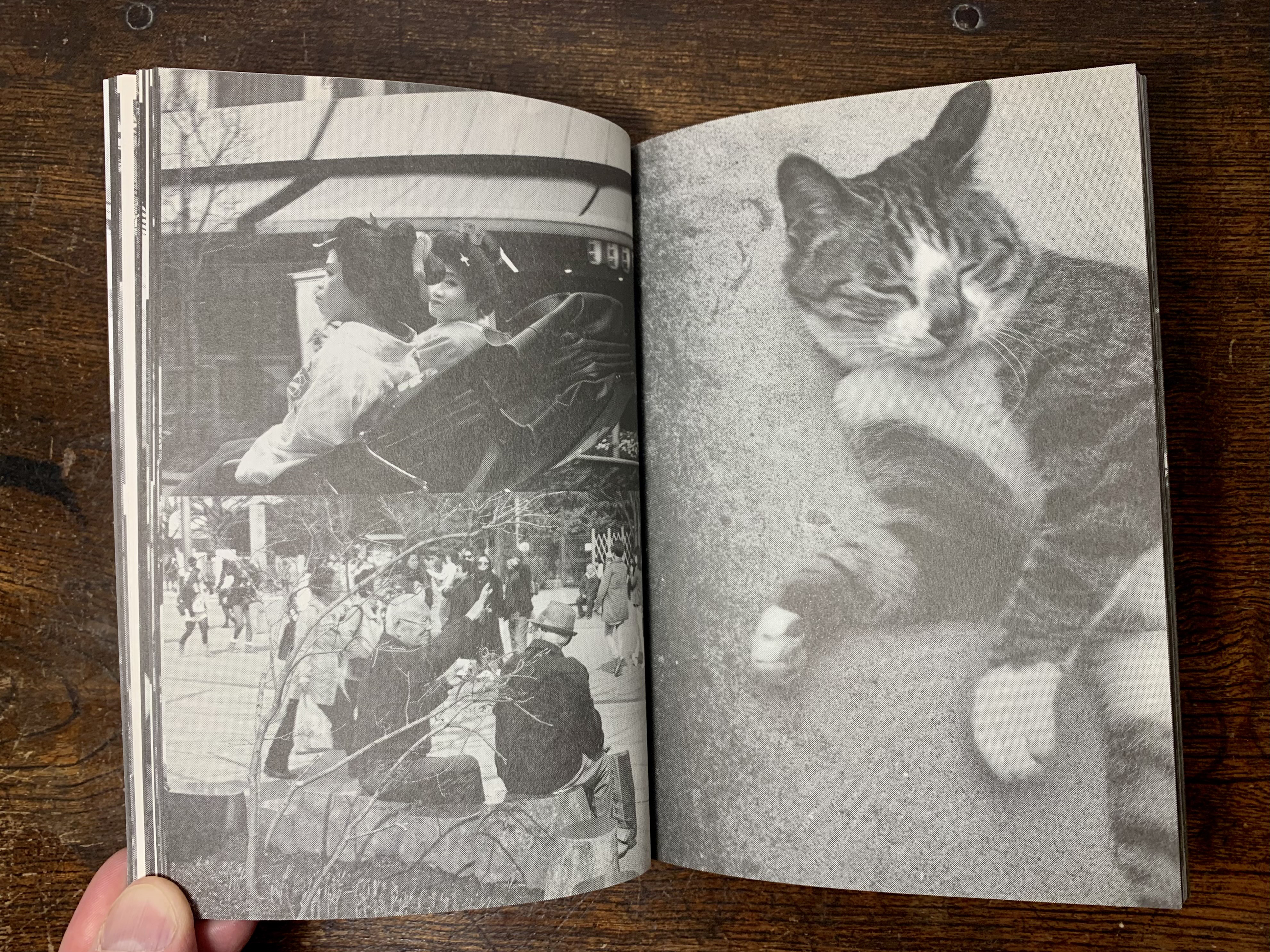
この作品は、新聞紙のような用紙にペーパーバックの表紙を付けて、格安の手法で制作されています。画像は精巧に作られたデュオトーンではなく、アーカイブ品質の紙に何色もの黒インクを使った微妙なグラデーションでもありません。その印刷品質は『写真時代』初期の白黒ページや、20世紀の日本の雑誌文化を構成していた何兆枚ものモノクロ新聞印刷を思い起こさせます。ハーフトーンで印刷された画像は、浅草のラフな雰囲気などに呼応しているのです。
この写真集がどのような経緯で作られ、どのような資金で作られたかは知りませんが、写真集とは夢と数字のバランスがとれたゲームの結果であることは確かです。写真集『東京祭臭』は、若い写真家が初めて自費出版した写真集の予算で作られたものですが、そこがまた魅力的です。
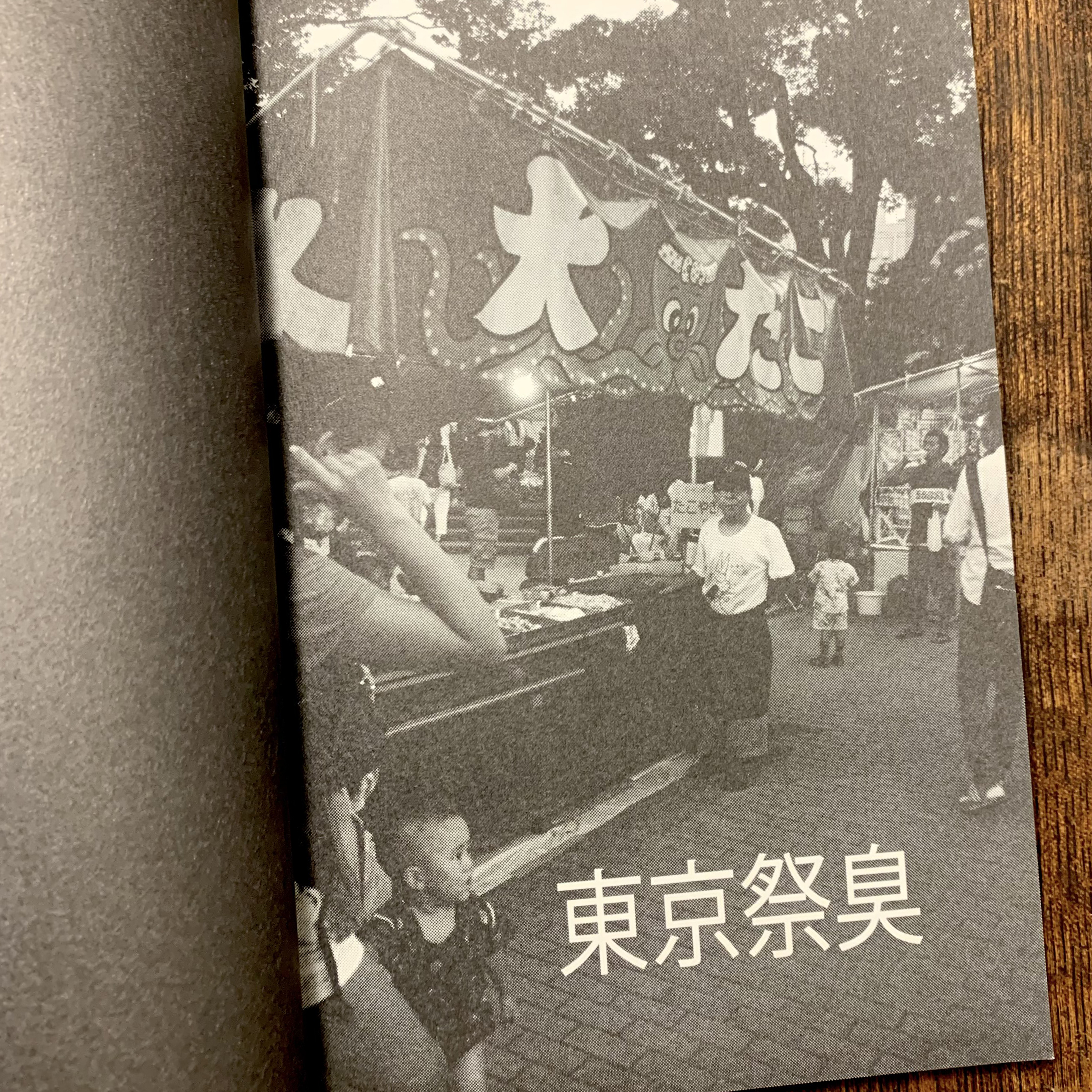
- 桑田絵梨『東京祭臭』
- 2017年3月7日発行
- 四六判・96ページ・私家版
- 価格:1,100円(税込)
- Eri Kuwata website
 26 Duets? Duels? Near-overlaps of time and Space across Tokyo. 東京の時間と空間が重なり合う写真集ツアー
2025/04/04
26 Duets? Duels? Near-overlaps of time and Space across Tokyo. 東京の時間と空間が重なり合う写真集ツアー
2025/04/04
 25 Naoki Ishikawa "TOKYO The City Where I Was Born" 石川直樹『東京 ぼくの生まれた街』
2024/01/05
25 Naoki Ishikawa "TOKYO The City Where I Was Born" 石川直樹『東京 ぼくの生まれた街』
2024/01/05
 24 山内道雄 Michio Yamauchi『TOKYO UP CLOSE』
2023/10/20
24 山内道雄 Michio Yamauchi『TOKYO UP CLOSE』
2023/10/20


PCT Membersは、Photo & Culture, Tokyoのウェブ会員制度です。
ご登録いただくと、最新の記事更新情報・ニュースをメールマガジンでお届け、また会員限定の読者プレゼントなども実施します。
今後はさらにサービスの拡充をはかり、より魅力的でお得な内容をご提供していく予定です。
 「Photo & Culture, Tokyo」最新の更新情報や、ニュースなどをお届けメールマガジンのお届け
「Photo & Culture, Tokyo」最新の更新情報や、ニュースなどをお届けメールマガジンのお届け 書籍、写真グッズなど会員限定の読者プレゼントを実施会員限定プレゼント
書籍、写真グッズなど会員限定の読者プレゼントを実施会員限定プレゼント